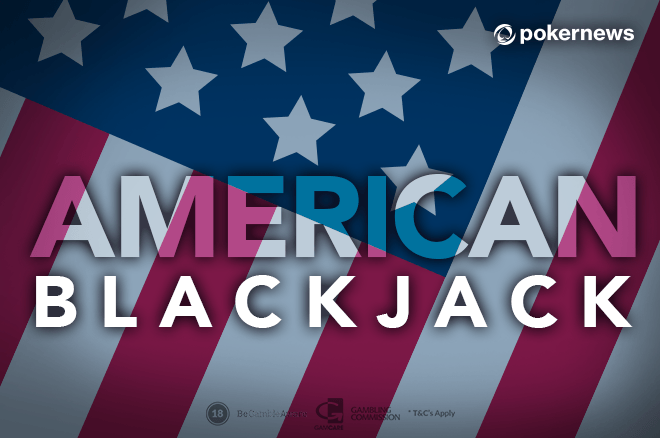How To Increase Your Chances In Blackjack
One of the most appealing aspects of blackjack is that there’s some element of skill involved. With many casino games, you are entirely reliant on luck, but with blackjack your actions affect the outcomes of hands.
Increase your chances of winning Maximise the amount you win (through doubling down) Minimise the chances of going bust Minimise any losses (through folding or deciding against doubling). A “blackjack” is a 2-card hand totaling 21 – it’s always a hand made up of an ace and a card worth 10 points. In most casinos, a blackjack pays off at 3 to 2 odds. This means if you bet $100 and get a blackjack, you get $150 in winnings. But in some casinos – at some tables – blackjack only pays off at 6 to 5 odds.
Blackjack is still a game of chance; it’s just that luck isn’t the only factor that determines whether or not you win or lose.
- The house edge in blackjack is around 0.5% if you use basic strategy. Of course, that 0.5% can go up or down based on your skill level. Most players are bad enough at blackjack basic strategy to give up another 1.5% or so to the house, making the house edge for the casino 2%.
- Some betting methods, like the Up and Pull, can greatly increase your odds for success. There are others, however, that should be avoided at all costs. Among these are any methods which call for you to double the amount of a losing bet on the next hand. Here’s an example. You bet one unit on your first hand at the blackjack table and lose.
What this means in practice is that you can actually improve your chances of winning. More accurately, in fact, it means that you can decrease your chances of losing.

Every decision you make, such as whether to hit or to stand, will have a direct impact on the result of a hand.
If you consistently make the correct decisions, you can reduce the house edge to a level where the casino’s advantage is almost obsolete.
On this page we explain how basic blackjack strategy can help you make correct decisions each and every time you play.

We explain how it works, how to use it, and we provide a sample strategy chart. We also look at a few blackjack strategies that don’t work.
How Blackjack Strategy Works
You have some information to work with every time you have a decision to make at the blackjack table. You know what cards you have, and you can see one of the dealer’s cards. Based on this information, it’s possible to work out the probabilities of what could happen next.
This is because there’s a fixed number of cards in the decks, and a fixed probability for each of those cards being dealt.

This is done by comparing the probabilities of all the possible combinations of cards that could be dealt, and determining how these combinations would impact the final outcome of the hand.
Once you know how the different actions you can take will affect your chances of winning, you can then choose the optimal one. There’s always a correct mathematical decision to make, and taking it enables you to keep the house edge to the absolute minimum.
That is essentially the whole point of blackjack strategy.
The problem with basic blackjack strategy is that it’s not always easy to establish the correct decision accurately. There are some complicated mathematical calculations required.
Unless you’re a genius, there’s a very small chance of you being able to make those calculations every time you play a hand. Thankfully, you don’t have to make any calculations.
These rules tell you exactly what action you should take in any given situation, based on the cards in your hand and the exposed dealer card.
By following them, you can apply basic blackjack strategy without using any math at all. All you have to do is learn the rules.
Given that there are hundreds of different situations you can find yourself in at the blackjack table, learning the rules for what to do in each one isn’t necessarily easy.
It might be pretty obvious that you should stand if you have 20 and the dealer is showing an eight, but situations such as having 12 when the dealer is showing a three are perhaps not so clear.
If you want to apply basic blackjack strategy perfectly, then you need to know what to do in every possible situation. This is where the use of strategy charts comes in handy.
A blackjack strategy chart is a matrix that shows all the possible combinations of your hand and the dealer’s exposed card. It shows the action you should take when facing each combination.
These charts are based on the correct rules for employing basic strategy, so if you do what the chart says, you’ll be making the right decision every time.
The following is an example of how a strategy chart looks. Along the top you have the dealer’s card, and down the side is your hand. Each individual cell shows what action you should take for the relevant combination.
The chart includes a key for the action each symbol in the cells represents.
You’ll notice that some of the actions are dependent on certain rules. For example, splitting is the right decision in some situations only if you are allowed to double after a split. This is because there are variants of blackjack where some of the rules are different.
The perfect strategy will vary depending on the exact rules of the blackjack variant you are playing. The chart shown above is the correct strategy for playing an eight deck game where the dealer stands on soft 17.
A few decisions would be slightly different if you were playing another game. These differences are, however, very marginal. If you follow the above chart for any variant, you will still play close to perfect hand.
How To Increase Your Chances In Blackjack 2
Therefore, you stand a much better chance of winning more hands than you lose during a single session.
There are a few blackjack strategies that, for some reason, are popular among players even though they don’t work. These are as follows:
- Mimic the Dealer
- Never Bust
- Assume a Ten
- Progressive Betting
Mimic the dealer is a simple strategy where you simply act in the same way as a dealer would in any situation. You would never split, double, or surrender, because these options aren’t available to the dealer.
Basically, you would just hit on less than 17 and stand on 17 or higher, regardless of the dealer’s exposed card. This isn’t a good strategy at all, because splitting and doubling can be very advantageous to the player in the right situations.
Never bust is an equally simple strategy.

You just never hit if there’s a risk of going bust, so you always stand on 12 or higher. While this might seem like a safe approach, it actually increases the house edge.
A ten strategy works on the basis that you assume the next card will always be a ten, and that the dealer’s unexposed is a ten. Players often work on this assumption due to the fact that cards valued at ten make up around 30% of the deck (remember jacks, queens, and kings are all valued at ten).

However, 70% of the cards aren’t valued at ten, so you are still more likely not to get a ten. As such, this strategy doesn’t really work and increases the house edge.
Progressive betting is increasing or decreasing your bet size based on the result of your previous bet. This is a strategy that can be used in any form of betting, and there are several different progressive betting systems in existence.
They don’t have any effect on the house edge, because your chances of winning or losing a hand don’t change based on how much you bet.
How To Increase Your Chances In Blackjack Card Game
They can also be very dangerous, particularly when aligned with systems such as the Martingale where you keep increasing your stake after a loss. One bad run can result in the loss of your entire bankroll.